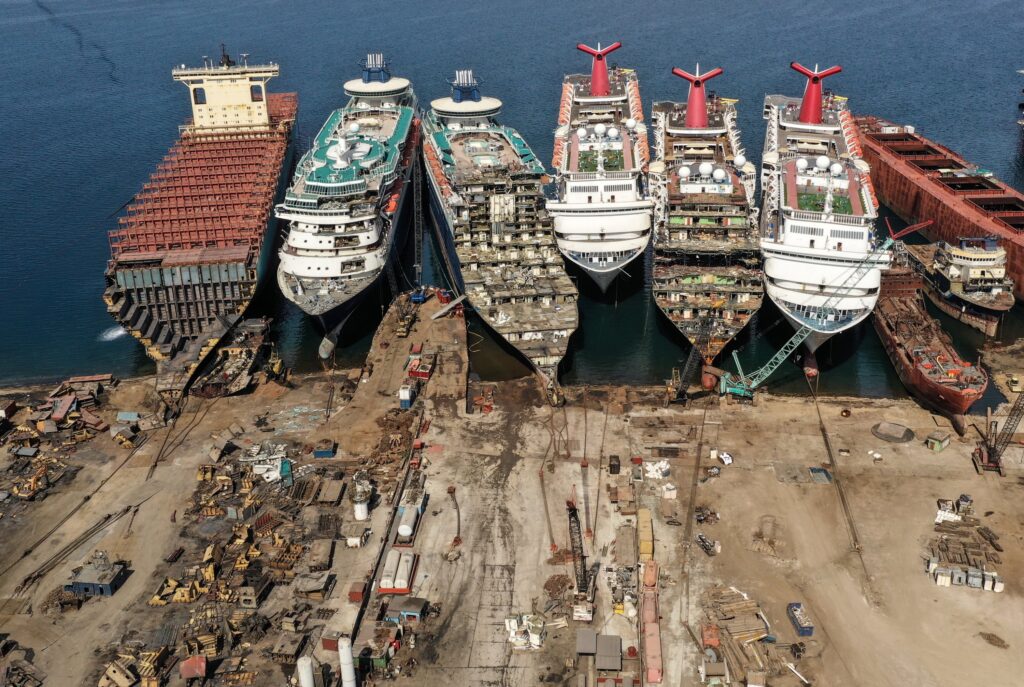The Mysteries of Ship Bending Unveiled: A Dive into the Curious Phenomenon
Have you ever wondered why big ships, those mammoth vessels that traverse the vast oceans, seem to exhibit a peculiar behavior known as bending? It’s a fascinating phenomenon that has captured the curiosity of many. In this article, we’ll explore the science behind ship bending and unravel the mysteries that lie beneath the surface of the world’s oceans.
The Basics of Ship Bending
Ship bending refers to the noticeable curvature or flexing that large ships experience while sailing through the water. Unlike smaller boats that may remain rigid as they navigate the waves, massive vessels, such as cargo ships and oil tankers, often exhibit a visible bending or hogging effect. But why does this happen?
Navigating the Seas of Regulation: The EU Ship Recycling Dilemma
Understanding the Forces at Play
To comprehend ship bending, one must first grasp the complex interaction between the forces acting on these colossal vessels. When a ship moves through the water, it experiences various external forces, including waves, wind, and the ship’s own propulsion. These forces create dynamic stresses that can cause the ship’s structure to deform.
Water Waves and Ship Bending
The most significant contributor to ship bending is the presence of water waves. As a ship encounters waves, it undergoes a repetitive cycle of rising and falling. The upward force exerted by the water as the ship rises, coupled with the downward force as it descends into a wave trough, induces bending stresses on the ship’s structure.
The Length Matters
The size of a ship plays a crucial role in the bending phenomenon. Larger ships have longer hulls, and their sheer size makes them more susceptible to bending stresses. Imagine a seesaw – the longer the plank, the greater the bending when weight is applied. Similarly, the extended length of a big ship makes it more prone to bending effects.
Tragedy Strikes as Cargo Ship Sinks off Greek Coast : Four Indians Among Missing CrewHogging and Sagging
Ship bending is often categorized into two main types: hogging and sagging.
- Hogging: Hogging occurs when the middle part of the ship’s hull bends upward. This typically happens when a ship encounters a wave crest. The upward bending creates tension forces along the length of the ship, putting stress on the structure.
- Sagging: On the contrary, sagging occurs when the middle part of the ship’s hull bends downward. This usually takes place when a ship is in a wave trough. The downward bending generates compression forces along the ship’s length, also impacting the overall structural integrity.
The Role of Materials and Design
The materials used in constructing a ship and its design also influence the extent of bending. Modern ships are typically made from steel, which has a high tensile strength, allowing it to withstand significant bending stresses. Additionally, naval architects incorporate specific design features, such as reinforcing the hull and using appropriate structural elements, to minimize the impact of bending on a ship’s overall performance.
Dynamic Stability and Trim
Ship stability is a critical factor in navigating the open sea. Dynamic stability, which refers to a ship’s ability to return to an upright position after being disturbed, plays a vital role in managing bending stresses. Additionally, trim, or the longitudinal balance of a ship, affects how it rides on the water. Proper trim helps distribute the forces more evenly along the hull, minimizing the risk of excessive bending.
Real-world Examples
Several real-world incidents highlight the significance of understanding and managing ship bending. Historical maritime disasters, such as the breaking of the SS Schenectady in 1943, underscore the potential dangers associated with extreme bending stresses. These incidents have led to advancements in naval architecture and engineering to enhance ship design and reduce the likelihood of structural failure.
Conclusion
In conclusion, the bending of big ships is a captivating phenomenon rooted in the dynamic forces of the open sea. As these massive vessels traverse waves and navigate challenging conditions, they experience bending stresses that impact their structural integrity. Through a combination of advanced materials, thoughtful design, and an understanding of the forces at play, naval architects strive to ensure that ships can withstand the immense pressures of the ocean.
While ship bending may seem like a curious quirk of maritime physics, its study is vital for ensuring the safety and reliability of the vessels that form the backbone of global trade and transportation. As technology advances and our understanding of fluid dynamics improves, the mysteries of ship bending may continue to be unveiled, paving the way for even safer and more resilient ships in the future.








